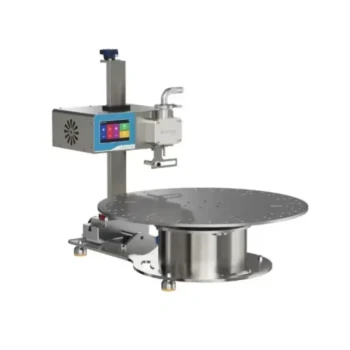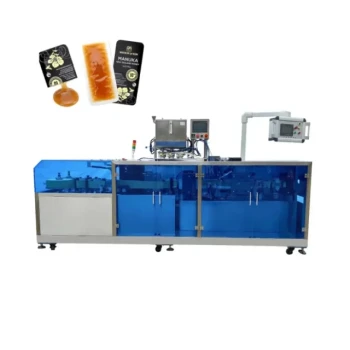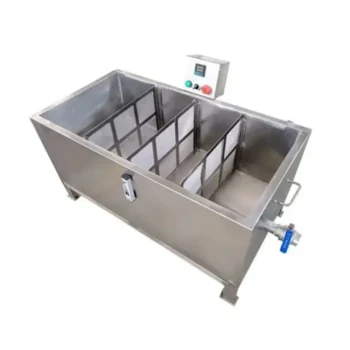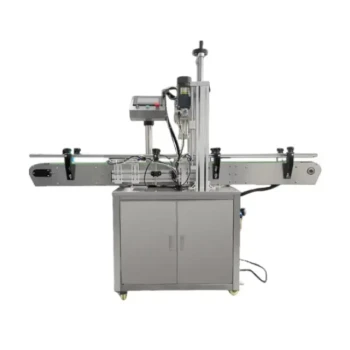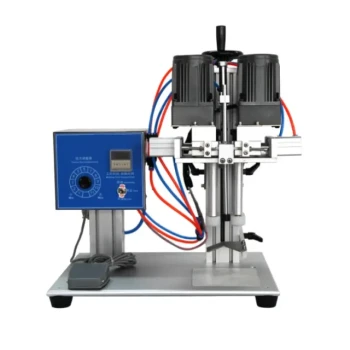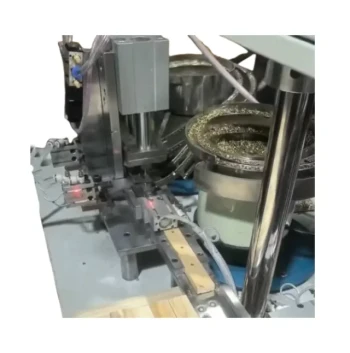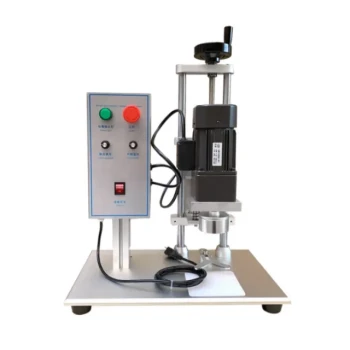At its core, a honey processing machine is an integrated industrial system designed to take raw honey from the honeycomb and transform it into a clean, consistent, and shelf-stable product with minimal human intervention. This equipment automates the entire workflow, from extraction and filtration to final packaging, enabling producers to increase output, standardize quality, and maintain strict hygiene.
The crucial insight is that a honey processing machine isn't just one piece of equipment, but a complete plant. It addresses the fundamental challenge of converting a raw, variable agricultural product into a uniform, commercially viable food item efficiently and at scale.

The Journey from Comb to Jar: The Automated Process
A honey processing machine follows a precise, multi-stage workflow to refine raw honey. Each step is engineered to purify the honey and prepare it for sale while maintaining its essential qualities.
Step 1: Extraction
The process begins by using an extractor, which applies centrifugal force to spin the honey out of the wax honeycombs. This initial step efficiently separates the liquid honey from the comb structure without crushing it.
Step 2: Filtration
Once extracted, the honey undergoes filtration to remove impurities. It typically passes through a coarse filter to remove large debris like wax particles and bee fragments, followed by a fine filter to ensure a clear, pure final product.
Step 3: Gentle Preheating and Homogenizing
To improve flow and aid filtration, the honey is gently warmed. This step also dissolves any sugar crystals (a process called melting crystallization nucleation), creating a smooth liquid. A homogenizer then blends the batch to ensure a perfectly consistent texture and taste.
Step 4: Low-Temperature Concentration
Raw honey often has a higher moisture content than is ideal for long-term storage. The machine uses a low-temperature process to remove excess moisture, which prevents fermentation and helps the honey meet required quality standards.
Step 5: Filling and Packaging
The final stage is bottling. An automated packaging unit precisely fills and seals jars or other containers, making the honey ready for distribution and sale.
Understanding the Core Components
While designs vary, most honey processing plants are built around a few key pieces of technology that work in unison.
The Extractor
This is the workhorse of the system. It's a large drum that spins frames of honeycomb, using centrifugal force to pull the honey out and collect it at the bottom.
The Filtration System
This consists of a series of sieves and filters that progressively remove smaller and smaller particles from the honey, clarifying it without the use of chemicals.
The Processing Tank
This is a multi-function unit where several critical steps occur. It often includes a heating element for gentle warming, mixing paddles for homogenizing, and a vacuum system for moisture reduction.
The Packaging Unit
This component automates the final, labor-intensive step of getting the honey into its final container. It ensures accurate fill levels and a secure seal for every package.
The Primary Trade-off: Efficiency vs. "Raw" Status
While a processing machine offers undeniable benefits, it's essential to understand the primary trade-off.
The Impact of Heat
The most significant consideration is the use of heat. Although applied gently, any heating process can begin to degrade the natural enzymes and delicate aromatics that define "raw" honey. This is a critical distinction for producers targeting the artisanal or health food markets.
The Loss of Uniqueness
Homogenization creates a wonderfully consistent product, which is ideal for large commercial brands. However, this process blends away the subtle, batch-to-batch variations in flavor and texture that many small-scale beekeepers prize.
The Investment Scale
These machines represent a significant capital investment. Their efficiency is best realized in medium- to large-scale operations where the volume of honey justifies the cost and moves beyond the scope of manual or semi-automated methods.
Making the Right Choice for Your Goal
Selecting the right processing method depends entirely on your business model and the product you aim to deliver.
- If your primary focus is large-scale commercial production: A complete honey processing machine is essential to achieve the consistency, hygiene, and efficiency required by the market.
- If your primary focus is artisanal, "raw" honey: You will likely rely on manual methods or smaller, single-function equipment (like an extractor) to preserve the honey's natural state.
- If your primary focus is scaling from a small to a medium operation: Investing in a modular or smaller-scale processing plant can provide a critical boost in productivity without compromising quality.
Ultimately, a honey processing machine is a strategic tool that standardizes a natural product, making it ready for a wider commercial audience.
Summary Table:
| Stage | Key Process | Equipment Used |
|---|---|---|
| 1. Extraction | Removing honey from comb | Extractor (uses centrifugal force) |
| 2. Filtration | Removing impurities (wax, debris) | Coarse and fine filters |
| 3. Homogenizing | Gentle heating & blending for consistency | Processing Tank with heating/mixing |
| 4. Concentration | Removing excess moisture for shelf life | Low-temperature vacuum system |
| 5. Packaging | Filling and sealing final containers | Automated packaging unit |
Ready to Scale Your Honey Production?
For commercial apiaries and beekeeping equipment distributors, efficiency and consistency are key to profitability. HONESTBEE supplies the robust, wholesale-focused honey processing equipment you need to automate your workflow, increase output, and maintain the highest quality standards.
Contact our experts today to discuss the ideal processing solution for your operation and get a customized quote.
Visual Guide

Related Products
- Fully Automatic Honey Filling Packaging Machine for Processing Line
- Semi Automatic Small Honey Bottle Filling Machine Honey Filler
- Manual Honey Filling Machine Bottling Machine for Honey
- Double Nozzle Small Honey Filling Machine Honey Sachet Packing Packaging Equipment
- Pneumatic Double Nozzle Honey Filling Bottling Packaging Machine
People Also Ask
- How does automation in honey filling reduce labor costs? Boost Efficiency & Cut Costs by 30%
- How does an overflow honey bottle filling machine work? Achieve Perfect Shelf Appeal for Your Brand
- How does a heating mechanism in a honey filling machine help? Unlock Speed, Accuracy & Premium Quality
- What are the different types of honey fillers? A Guide to Manual, Semi & Fully-Automatic Fillers
- What are the benefits of using honey filling machines? Boost Efficiency & Quality in Your Apiary






